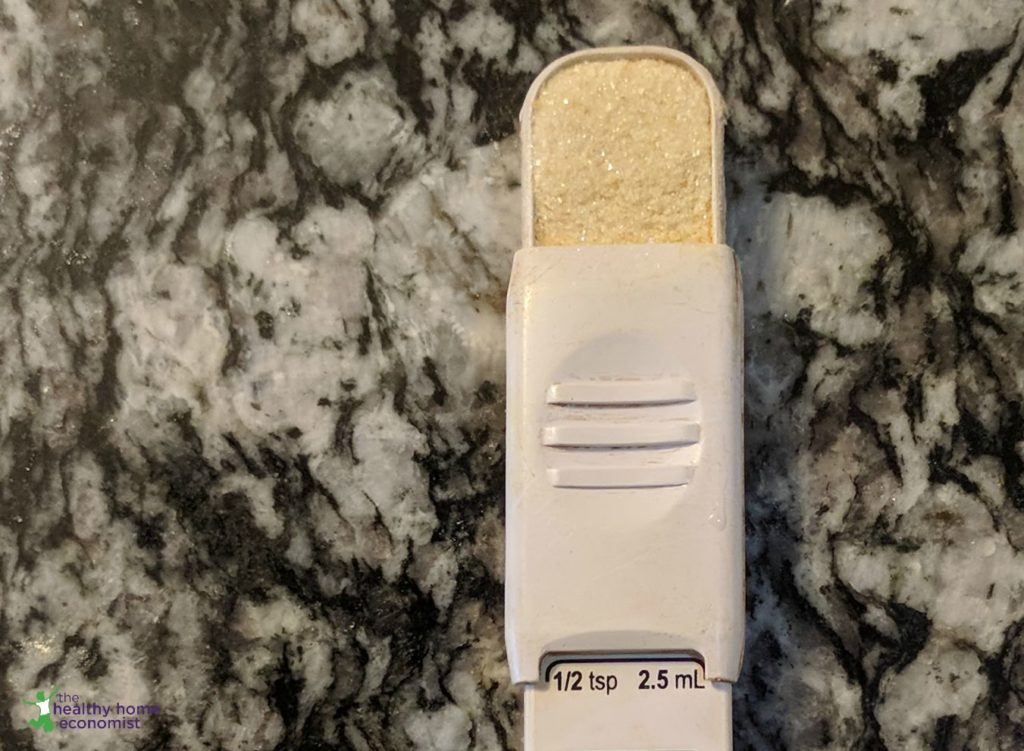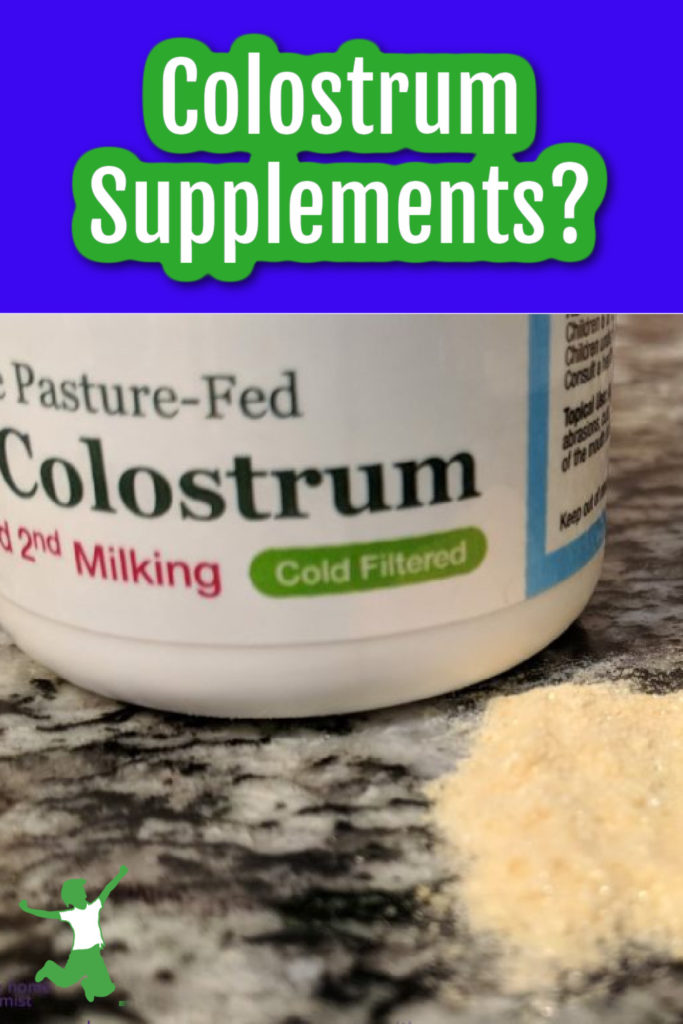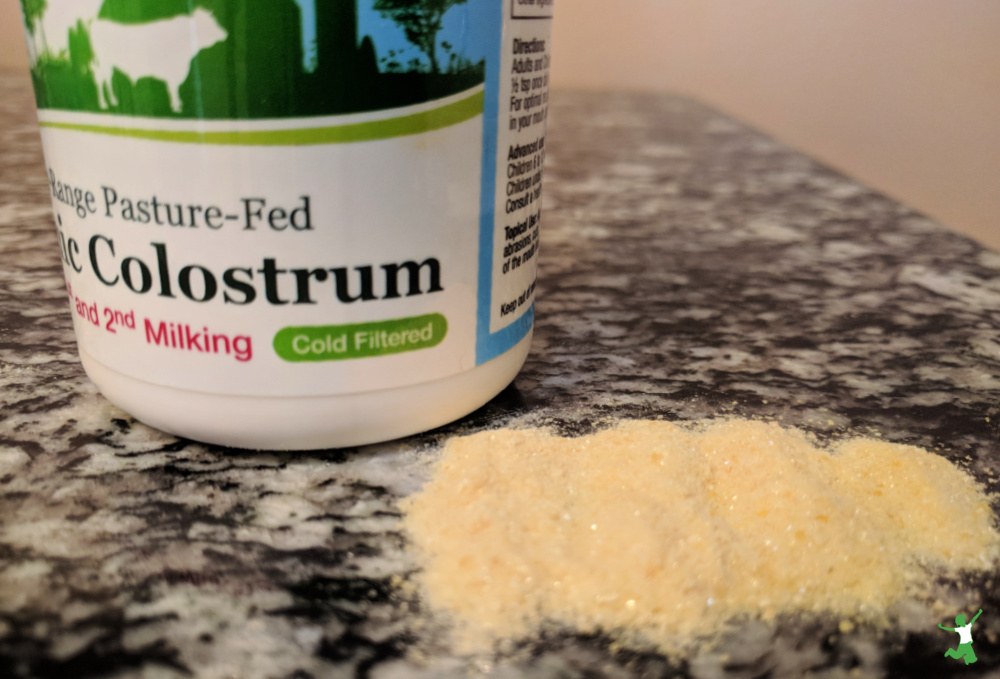The benefits and possible drawbacks of fresh and powdered colostrum supplementation as Mother Nature’s most primal and potent superfood with an overview of the scientific research using it to boost the immune system in children and adults.
Colostrum is Mother Nature’s most primal and potent immune system strengthener.
Babies need it. Moms, cows, and other mammals make it. But does it make sense as a supplement?
Or how about as a fresh superfood source from your local, grass-fed dairy farm? Let’s examine this popular immunity booster and see if it is worth the cost
What is Colostrum?
Colostrum is the first milk mammals produce after giving birth. Production starts a few weeks before delivery when the pregnant female’s mammary glands begin to create it in very small amounts. Colostrum is loaded with antibodies and other immune-boosting co-factors that defend a newly born mammal from disease.
Like breastmilk, colostrum shows a degree of adaptability to the needs of the baby and can even change over time. Note, however, that “time” is short when it comes to colostrum. Cows and humans produce it for only 3-4 days!
For newborns, colostrum is a true superfood. Science and studies show it has all sorts of benefits that no substitute can match. It contains a host of beneficial enzymes, antibodies, and growth factors specifically made for the baby.
One of these is lactoferrin, a multi-functional protein that is an important component of the human immune system. It is highly anti-bacterial, anti-viral, and anti-fungal, but quickly destroyed by heat.
Interestingly, some of these beneficial substances do not continue to appear in mammalian milk during the rest of lactation. For this reason, some people consider colostrum as a superfood supplement. (1)
Goat vs Cow Colostrum
While most colostrum on the market is from cows, some companies and farms also offer goat colostrum.
Just like with fluid and other milk products, some people tolerate dairy from certain animals better than others.
If you don’t do well on bovine milk either from A1 or A2 cows, then look for goat milk supplements.
Fresh is Best!
Given the fragile nature of many of the most beneficial components of colostrum, if it is something you want to try, know that fresh and raw is best. But be ready to pay for it – fresh colostrum is expensive! In addition, fresh colostrum is extremely hard to source and only available at certain times of the year.
Cows don’t make much of it, and they don’t make it for long. Good farmers know that they can only take a small amount away from the calves without harming them. Fresh frozen is also a good option if you have a condition that something like colostrum may help.
Either way, almost all types of good quality colostrum…fresh, frozen, or dried and powdered…can be pricey. (2)
What Conditions Can Colostrum Benefit?
There is some research showing that colostrum may be helpful for resolving a number of conditions. One that seems especially promising is helping the digestive tract get back on track, say after antibiotics or other disruptive events. This includes dealing with diarrhea and other digestive distress. (3, 4)
But overall, the research is mixed on colostrum and supplements made from it. Mostly small studies provide conflicting results and marginal benefits. An occasional one shows promise, but far more research is needed. (5)
Note that many companies claim that studies support their health claims for colostrum, but when you go look for any supporting studies, they don’t seem to be saying what the companies think they are saying! This is a common pitfall to watch out for in supplement marketing material. (6)
From a clinical perspective, respected practitioners such as Chris Kresser also report underwhelming results. (7)
Drawbacks of Supplementation
A number of researchers raise valid concerns about some components of colostrum. The substances that are beneficial for newborns may actually be problematic for older children and adults.
The research in this area is sparse, but some scientists point out that a mature digestive system neutralizes a lot of the growth factors and other beneficial substances present in colostrum before they are absorbed.
Perhaps this is why Mother Nature wisely provides this food for a short period of time and only for newly born mammals with immature digestive systems!
Adults with compromised immune or digestive function, the same people who would most benefit from colostrum, also face the greatest possible risk.
This may indicate why many researchers have seen poor clinical results with colostrum for most patients. The beneficial compounds never make it into the small intestine where they can be absorbed into our bodies.
Colostrum Processing
Like with any supplement or superfood, not only do you need to check on the quality of the main ingredient but also the quality of any additives found in the final product. Note, some brands say they are “soy-free,” but that doesn’t mean that the animals didn’t eat soy or even GMO soy!
Given that research confirms that soy isoflavones easily find their way into milk, meat, and eggs, if you are soy sensitive, don’t trust soy-free labels unless the company also gives clarity on their animal feeding practices. Colostrum from pastured animals given no antibiotics or growth hormones is always optimal.
With colostrum supplements, a number of problems present themselves. Many beneficial components in colostrum don’t take kindly to drying, processing, powdering, handling, and storage, similar to probiotics and whey protein powder.
Even if a company carefully collects and processes the colostrum, that doesn’t guarantee that during storage or shipping it won’t be exposed to conditions that degrade its quality. Buyer beware!
For this reason, with light, temperature, and age-sensitive supplements, I purchase them only during appropriate times (neither too hot nor too cold) of the year from companies that guarantee proper storage, handling, and shipping.
Bioavailability
Colostrum has another potential drawback mentioned above. Many of its components do not survive digestion in older children and adults. Some manufacturers claim to sell products that bypass this problem through proprietary technology, such as this brand:
Sovereign Laboratories’ proprietary in-house Liposomal Delivery (LD) system is an applied coating which allows colostrum to readily dissolve in liquids and ensures the colostrum will bypass digestion, be transported through the bowel wall, circulate throughout the body, reaching organs and cells while remaining bioavailable and healing at the cellular level. (8)
Evaluating the truth of such claims is beyond the scope of expertise of this article. But as mentioned above, buyers beware particularly for specialty colostrum supplements that are even more expensive. Carefully consider the fact that mature digestive systems don’t allow a wide range of compounds in colostrum to make it past digestive defenses.
Dosage
1/2 teaspoon or 1.5 grams once per day is a typical recommended dosage of colostrum powder for children 12 years old and up. Taking on an empty stomach and letting the powder dissolve in the mouth before swallowing apparently produce optimal results.
Hence, if using capsule form, it seems best to break them open and empty the powder directly onto the tongue rather than swallowing the capsules.
Note that some brands recommend more. The liposomal delivery (LD) brand discussed above suggests a serving of 5 grams (about 2 teaspoons) per day. Follow manufacturer instructions and reach out to a trusted practitioner if unsure.

Hyper-Immune Bovine Colostrum (HIBC)
Not to be left out of a potentially lucrative market, pharmaceutical companies have jumped onto the colostrum bandwagon with the development of the drug known as hyperimmune bovine colostrum (HIBC).
The FDA approved HIBC under orphan drug status, which grants special status to biological products used to treat rare diseases or conditions. The manufacturing process is as follows:
[HIBC] is produced by cows that have received vaccinations against specific disease-causing organisms. The vaccinations cause the cows to develop antibodies to fight those specific organisms. The antibodies pass into the colostrum. Hyperimmune bovine colostrum has been used in clinical trials for treating AIDS-related diarrhea, diarrhea associated with graft versus host disease following bone marrow transplant, and rotavirus diarrhea in children. (9)
Should You Take It?
Ultimately, whether or not you choose to take colostrum as a supplement is up to you. The potential toxicity risk is slim to none if from pastured animals.
However, its effectiveness is unproven although there are many anecdotal cases of success.
I personally am unsure how I feel about this particular pharmaceutical product. I believe the late Jerry Brunetti of the Weston A. Price Foundation Honorary Board used it in his battle with cancer, with what appeared to be at least short-term success.
The late Rami Nagel, author of the popular book Cure Tooth Decay was also a fan even producing his own supplemental version at one point.
For some disease conditions, I would consider trying HIBC before more synthetic, toxic, side effects-ridden pharmaceuticals, especially if I lacked other options.
Have you tried colostrum or know someone who has? What were the results?

(1) What is Colostrum?
(2) Premier Research Labs Colostrum-IgG
(3) Bovine Colostrum
(4) Bovine colostrum: an emerging nutraceutical
(5) Bovine colostrum may boost the immune system
(6) If a medical cure looks too good to be true, it probably is
(7) The Healthy Skeptic Episode 12 – “Grab Bag” Super Special
(8) Colostrum-LD Liposomal Delivery – Colostrum Powder
(9) Bovine Colostrum








Hi Sharri, I see it’s been a few months since your post. However cow colostrum is closer to humans when it comes to what our body’s can use.
colostrum was the only thing that eliminated the parasite blastocystis hominis after years of trying other products.
Hi, I have been using Colostrum for a while on and off due to stomach issues. Since I started recently with the colostrum again I am not experiencing any discomforts with my stomach and my immunesystem is better. I sleep better and I feel more energetic. I really recommend the colostrum from Immune tree, the taste is delicious. Unfortunately it costs abit but you really do get what you pay for.
hELLO – i STARTED taking Colostrum (organic) about 7 years ago when i developed interstitial cystitis. Almost immediately overnight the symptoms left when I began taking the Colostrum. I take a few a day to keep me healthy and my bladder from acting up. When I have a flare up I increase the colostrum and take 2 pills a few times per day and usually by the next day the flare up ceases. I ran out of Colostrum for about 1 month and I did notice the change. So back to Colostrum I go. I only use the organic.
Kelly…what brand are you using that you say you would highly recommend?? I just purchased Mt. Capra Capra Goat Colostrum. Please share your experience!!!
My biggest concern left on the table when it comes to considering taking bovine colostrum is all the growth factors in it. (the igf-1’s). Our cancer cells can also assimilate this stuff to grow and proliferate. So are these growth factors a double edge sword? If you notice, they don’t talk much about the igf-1’s in it, I think they know its a double edge sword and just avoid talking about them to any depth, or they only mention how it rebuilds the gut lining, which is great, but it still doesn’t put it to rest for me.
is cholostrum appropriate to use for loose bowels (diarrhea)? Also, does it interfere with vitamin and medications?
I have used Sovereign Laboratories colostrum basically to help heal opiate damage to my gut. I have been taking it for about six weeks now and it seems to help a lot. Hope it is not short term.
Kelly what kind of GMP certified colostrum are you taking
Kelli, what Brand are you using?